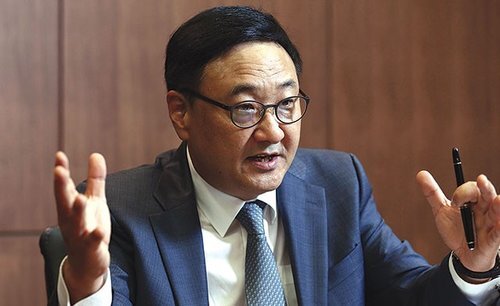An Interview with DongIk Lee of AIIB
DongIk Lee is a Director General at the Asia Infrastructure Investment Bank heading the Investment Operations Department.
Mr. Lee is a Director General at the Asia Infrastructure Investment Bank heading the Investment Operations Department. Prior to his time at AIIB, he was the CIO at Korea Investment Corporation (KIC, a Sovereign Wealth Fund). Before KIC, he was Senior Management Director at STIC Investments for 5 years, General Manager at Samsung Life Insurance for 5 years, and had worked at International Finance Corporation (a member of World Bank Group) for 10 years.
It was just past 9pm on a Sunday when my phone buzzed. I saw a Beijing number appear on my screen and I quickly picked up the phone leaving less than 2 rings between. On the other end of the phone was no other than DongIk Lee, an incredibly accomplished businessman that accepted an interview I am so grateful to have had. Our introductions were short but incredibly friendly and his humility and warmth were immediately apparent. Having given a bit of background, I proceeded to ask the following questions:
BT (Maxwell Chung): With existing multilateral development banks already in action across Asia, where was the need to found AIIB?
Mr. Lee emphasized that the bank was “established as a regional development bank focused on infrastructure.” Explaining that the focus was for the “development of countries in Asia,” he stated that the need to found the bank and the nature of the bank were intrinsically related. As a multinational bank, AIIB is present “wherever opportunities lie.” Their focus lies “mostly in clean energy, connectivity, transportation, power and energy, water, and urban development.”
BT: AIIB has been called a potential competitor to the World Bank and IMF. What strengths does AIIB offer to the global community that existing financial institutions do not? And how will the AIIB operate differently to capitalize on these strengths?
Mr. Lee explained that AIIB’s primary strength was that it was “young” and has been in business for “less than 3 years.” He described it as the bank’s priority to “work with other banks.” and divulged that the strength of the AIIB is its “good capital structure” which has allowed it to finance new projects and take action in a “lean fashion.”
BT: How do you pick which country you will finance projects in?
Mr. Lee described the selection process by expanding on the bank’s definition of “Asia,” namely “East Asia [including Southeast Asia], including Turkey and Russia.” He explained that the bank prioritizes “emerging rather than developed markets.” Further, he did not discount the ability for the bank to invest in “non-regional countries in Africa and Europe.” However, he described the that there were “limited capacity for these” as they required “special approval.”
BT: Many of the approved projects have been on the Indian subcontinent, what makes this region attractive?
Mr. Lee explained that “[India is] one of the largest [markets] in terms of portion and GDP [in Asia]”. He furthered that “India is an active infrastructure region, has long term history in infrastructure, has a relatively developed capital market, and has country policies focused on infrastructure investment.”
Summary:
Having spoken to Mr. Lee, the significance of the bank was exceedingly clear. Asia Infrastructure Investment Bank is not only an institution with a strong capital structure, but also a symbol of the numerous benefits of regional cooperation. With voting shares distributed amongst regional and global players, AIIB leverages regional expertise with global experience and precedent.
AIIB is in a unique position as a young China-headquartered multilateral bank. Although Mr. Lee states that AIIB is not directly related to Chinese economic policy and the Belt and Road initiative, he explains that if AIIB’s projects are in line with the initiative, this would be great for the parties involved. This ability to choose projects grants AIIB incredible transparency as the AIIB is not limited to a single country’s political incentive and, as a result, can be more focused on commercial viability.
Additionally, as the bank finances projects in the greater Asia region, the AIIB has the ability to invest in projects both inside and outside the BRI. Mr. Lee’s brief summary of the values and selection process of AIIB underlines its core philosophy of interconnectivity. Mr. Lee’s senior position in the bank indicates that the AIIB can leverage its senior management’s thorough knowledge of Asia and assures the global community that the future of investing in Asian infrastructure on a multilateral basis is in good hands.

